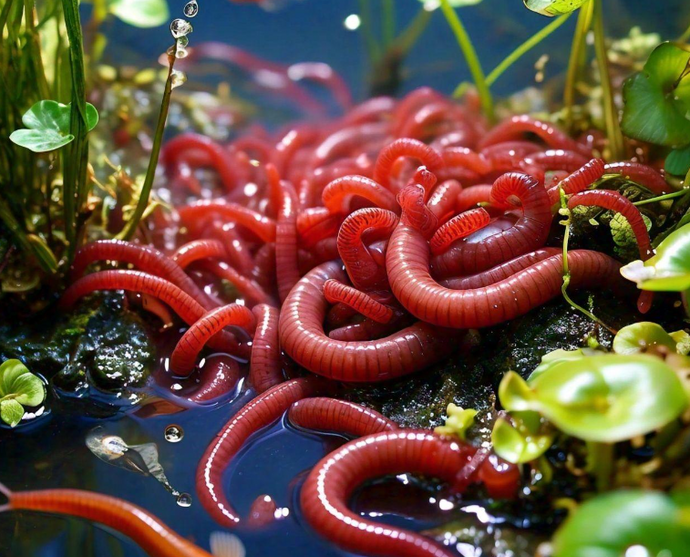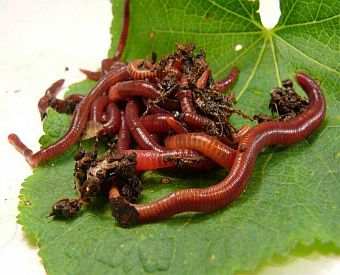Composting-friendly red wigglers: Best methods to keep them
Composting-friendly red wigglers: Best methods to keep them
Blog Article
Just How Red Wigglers Can Increase Your Organic Waste Recycling
Red wigglers represent a crucial part in boosting natural waste recycling, properly converting daily kitchen area scraps and garden particles right into beneficial worm castings. Understanding the intricacies of developing a vermicomposting system and the ideal treatment for these worms can substantially amplify the benefits.

Benefits of Red Wigglers
Red wigglers, a kind of composting earthworm, offer numerous benefits that make them invaluable in organic waste recycling. These worms can process kitchen area scraps, garden waste, and also paper products, changing them right into nutrient-rich castings.
In addition, red wigglers improve soil oygenation and drainage with their delving tasks, promoting a much healthier root environment for plants. Their spreadings are abundant in helpful microbes and necessary nutrients, fostering robust plant development and boosting soil framework (red wigglers). The usage of red wigglers in composting is an eco friendly choice to chemical fertilizers, which can have hazardous side results.
Furthermore, vermicomposting with red wigglers is a low-maintenance and efficient method of recycling natural waste, making it available for homes and communities alike. Their quick recreation rate ensures a stable supply for ongoing composting efforts, even more amplifying their advantages. In general, red wigglers work as a crucial component in lasting waste administration and dirt improvement techniques.
Setting Up a Vermicomposting System
Producing an efficient vermicomposting system needs mindful preparation and factor to consider of different aspects that contribute to its success. The structure of an effective system starts with picking an ideal bin. Choices range from business containers to homemade choices, however it is essential that the container is well-ventilated and properly sized to accommodate the number of red wigglers.
Following, the option of bed linen product is important. Suitable bedding consists of shredded newspaper, cardboard, or coconut coir, which provides both a habitat and a resource of carbon for the worms. The bedding should be dampened however not overly wet to avoid anaerobic problems.
Keeping the optimum atmosphere is important. Red wigglers grow in temperature levels between 55 ° F and 77 ° F(13 ° C to 25 ° C )and call for a pH level around neutral. Keeping an eye on wetness levels is also essential, as excessive moisture can result in odor problems, while insufficient can dry out the worms.
Finally, placing the vermicomposting system in a shaded location protected from direct sunshine will aid keep a stable environment. With these considerations in mind, one can successfully establish up a prospering vermicomposting system that improves natural waste recycling.
What to Feed Red Wigglers
Feeding red wigglers the right products is fundamental to preserving a healthy and balanced vermicomposting system. These worms grow on a varied diet regimen largely composed of raw material, which consists of vegetables and fruit scraps, coffee premises, crushed eggshells, and shredded paper. It is vital to prevent feeding them meat, dairy, oily foods, or any refined products, as these can create smells, draw in insects, and lead to a harmful atmosphere.
A balanced diet regimen for red wigglers advertises ideal digestion and nutrient production. Go for a mix of environment-friendly materials, high in nitrogen, such as vegetable peels and turf clippings, and brown materials, rich in carbon, like dried leaves and cardboard. This balance makes sure a sustainable food source while maintaining moisture levels in the worm bin.
In addition, it is a good idea to cut or shred bigger scraps to accelerate decomposition and make the food useful site extra accessible to the worms. On a regular basis keeping track of the intake rate will certainly aid determine the appropriate amount to feed, preventing overfeeding and preserving a flourishing community. By supplying a suitable diet regimen, you not just sustain the health and wellness of red wigglers yet additionally enhance the efficiency of your vermicomposting initiatives.
Maintaining Your Worm Bin
To ensure the health and wellness and efficiency of your vermicomposting system, keeping your worm container is vital. If it becomes also wet, excess moisture can lead to anaerobic problems, hurting your worms.
Extreme temperatures can worry or eliminate your worms. To achieve this, position your bin in a climate-controlled atmosphere away from direct sunshine or warmth sources.
Gently transforming the bed linens with a garden fork every few weeks will certainly assist freshen the product and avoid compaction - red wigglers. If this occurs, lower feeding and include even more carbon-rich materials like shredded paper or cardboard.
(Where To Buy Worms In North Carolina)
Using Worm Castings in Horticulture

Worm spreadings, frequently described as "black gold" by garden enthusiasts, are a very nourishing organic fertilizer that can considerably boost soil health and wellness and plant development. These castings are produced by red wigglers as they digest natural matter, causing a rich, dark, crumbly compound including helpful bacteria.
Incorporating worm castings into garden soil boosts its structure, aeration, and wetness retention, producing an ideal environment for origin growth. The high nutrient material of worm castings, consisting of nitrogen, phosphorus, and potassium, adds to strenuous plant development and increased returns. In addition, worm castings consist of important trace minerals and enzymes that promote the overall wellness of plants, enabling them to better endure parasites and diseases.
Worm spreadings can be applied straight to the dirt or combined into potting blends for container gardening. A slim layer spread over yard beds or contributed to compost heaps can likewise boost the microbial activity and nutrient profile of the garden compost. As a lasting and environment-friendly plant food choice, worm spreadings sustain organic gardening practices while lowering reliance on artificial fertilizers, consequently fostering a much healthier community.
Final Thought
To conclude, the assimilation of red wigglers right into natural waste reusing techniques presents a feasible option for improving soil health and advertising sustainable gardening techniques. By properly disintegrating kitchen area scraps and yard waste, red wigglers add to nutrient-rich worm spreadings that improve soil aeration and wetness retention. This environment-friendly approach not only minimizes garbage dump payments but likewise decreases the dependancy on chemical fertilizers, eventually fostering much healthier communities and liable waste management practices.
Report this page